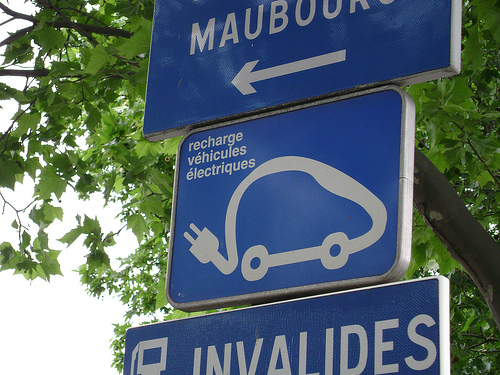Electric cars have been touted as the green wave of the future ever since George Jetson first shot across the animated small screen in his aerocar. But just how environmentally friendly — and, dare we ask, just how cost-effective — are they?

Even many environmentalists have embraced electric cars as the best alternative to traditional fossil fuel vehicles – but this orthodoxy is under challenge. From David Megginson.
At least one researcher is asking exactly those questions. Ozzie Zehner, author of Green Illusions: The Dirty Secrets of Clean Energy and the Future of Environmentalism, a visiting scholar at the University of California, Berkeley, (and creator of his own hybrid electric car), wrote an extensive and eye-opening report, Unclean at Any Speed, for IEEE Spectrum magazine exploring the costs and environmental disadvantages of EVs (electric vehicles).
Zehner isn’t the only one: A National Academies life cycle analysis claims that EVs will result in greater total environmental costs per mile than their gas-chugging vehicular counterparts, when taking into account the impact of battery disposal and manufacturing.
Now-conventional wisdom states that — as the IEA (International Energy Agency), did in a April 2013 report, “EVs reduce dependence on petroleum and tap into a source of electricity that is often domestic and relatively inexpensive. Just as important, EVs have the potential to unlock innovation and create new advanced industries that spur job growth and enhance economic prosperity.”
Even those environmentalists who once decried all vehicles are now advocating for electric hybrids, while Zehner, and critics like him, question whether the electric car is really all that green after all — especially when taking into account other solutions, such as public transport, bike-riding, and improved urban planning.
Electric vehicles have been touted as a major piece of the climate change solution. Are the benefits really there, though? From Steven Depolo.
Some fascinating statistics:
- Twenty-four governments around the world help their citizens pay for electric cars through subsidies. (The U.S. government offers up to $7,500 of tax credits to help pay plug-in electric vehicle owners). States offer further incentives, such as California’s contribution, which raises an electric vehicle owner’s tax credits to $10,000; Colorado’s, which adjusts the credit to $13,500; and West Virginia, which offers $15,000 in credits and $10,000 to pay for a charging station.
- The Chevy Volt is the top-selling EV in the U.S. The average Volt owner probably isn’t in dire need of the tax credits mentioned above: He/she takes home $170,000 yearly.
- One estimate suggests that yearly plug-in electric vehicles sales in the U.S. will reach over 400,000 in 2020; California will likely have the highest number of sales.
- A study conducted by Congress claims that EV subsidies “will result in little or no reduction in the total gasoline use and greenhouse-gas emissions of the nation’s vehicle fleet over the next several years.”
- Many of the researchers and think-tanks writing about EV usage are funded by car companies (Plug-in Hybrid and Electric Vehicle Research Center counts Nissan, BMW, Chrysler-Fiat as its partners) or led by former car company executives (Indiana University’s School of Environmental Affairs worked with a former Ford vice president) — which may lead to biased reports on EV efficacy.
- The National Academies study found that the overall difference in greenhouse emissions between battery-powered vehicles and low-sulfur diesel-powered vehicles were negligible.
Find this sign at roadtrafficsigns.com’s Electric Vehicle Parking department.
The takeaway? Environmental friendliness isn’t just about gas guzzling; it’s about the lifetime impact a vehicle exerts on the environment — from manufacturing process to battery disposal and every jaunt in between. A fair assessment of the energy efficiency of transportation takes into account not only electric and traditional vehicles, but the potential of bikes, public transportation, efficient urban planning, walkable neighborhoods, and other truly green alternatives.